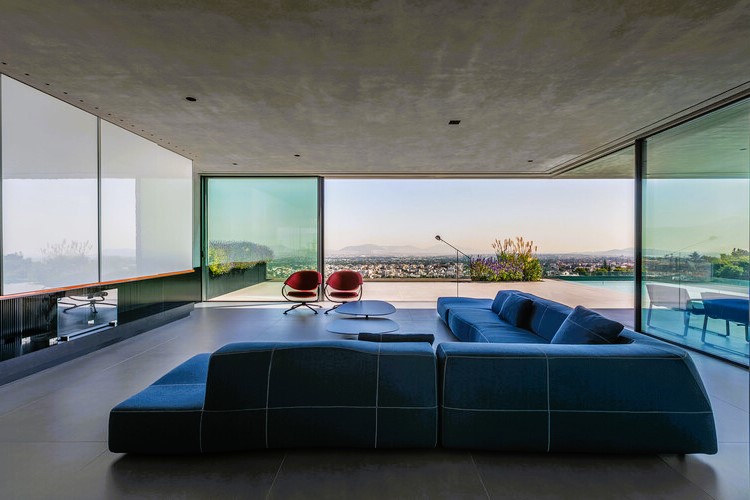
Efficient Window Design: Balancing Light and Insulation
Windows play a crucial role in the energy efficiency and overall comfort of a building. They are the primary interfaces between the interior and exterior environments, allowing natural light to enter while also serving as barriers to heat loss or gain. Achieving the right balance between light and insulation is essential for creating an energy-efficient and comfortable living or working space. In this article, we will explore the importance of efficient window design and how it can contribute to a sustainable and comfortable indoor environment.
The Role of Windows in Building Design
Windows are more than just portals to the outside world; they are a key element in architectural design that can significantly impact the overall energy performance of a building. When properly designed and installed, windows can enhance both the aesthetic and functional aspects of a structure. Their strategic placement and features can maximize natural daylight, reduce energy consumption, and provide proper insulation.
Efficient window design goes beyond aesthetics and involves several critical factors:
- Solar Heat Gain: Windows can be designed to allow or block solar heat gain, depending on the climate and orientation of the building. In colder climates, windows with high solar heat gain coefficients can help warm the interior during the winter, while in hotter regions, low-solar-gain windows can minimize the cooling load.
- Thermal Insulation: Insulating windows are essential in preventing heat transfer. Double- or triple-glazed windows filled with insulating gases like argon or krypton can significantly reduce heat loss during the winter and heat gain during the summer.
- Daylighting: Maximizing natural light through well-designed windows reduces the need for artificial lighting during the day, cutting energy costs and improving occupant well-being.
- Ventilation: Operable windows and strategically placed vents can facilitate natural cross-ventilation, reducing the need for mechanical cooling systems in mild weather.
- Sound Insulation: Properly designed windows can also reduce exterior noise pollution, ensuring a peaceful indoor environment.
The Challenge of Balancing Light and Insulation

Balancing light and insulation in window design can be challenging, as these two goals often appear to conflict with each other. Maximizing natural light may lead to increased solar heat gain and reduced insulation, while high insulation levels can limit the entry of natural light. The key is to find the right compromise that suits the specific needs of a building and its location. Want to reduce your carbon footprint? With our article, you will achieve this!
Glazing Options for Efficient Window Design
One of the primary ways to achieve the balance between light and insulation is by carefully selecting the appropriate glazing materials. Different types of glazing can be used to address various aspects of window performance:
- Low-E Coatings: Low-emissivity (Low-E) coatings are microscopically thin metal layers applied to window glazing to reduce heat transfer while allowing visible light to pass through. They are particularly effective in regulating both insulation and daylighting.
- Tinted or Reflective Glass: Tinted or reflective glass can reduce solar heat gain by blocking a portion of incoming sunlight. These options can be valuable in hot and sunny climates.
- Gas-Filled Insulated Glazing: Double- or triple-glazed windows with insulating gases between the panes provide excellent thermal performance, reducing heat transfer and condensation.
- Dynamic Glazing: Emerging technologies like electrochromic or thermochromic glazing can change their transparency in response to external conditions, optimizing daylighting and insulation dynamically.
Frame Materials and Design
The frame material and design also play a crucial role in achieving a well-balanced window. Materials like wood, vinyl, fiberglass, or thermally broken aluminum frames can offer varying levels of insulation. Properly designed frames with thermal breaks can prevent heat loss through the window’s edge, which is a common issue with less efficient windows.
Building Codes and Standards
Efficient window design is not only a matter of choice but is often mandated by building codes and standards. These regulations are in place to ensure that new construction meets energy efficiency and sustainability goals. For example, in Canada, the National Energy Code for Buildings (NECB) sets the requirements for energy-efficient windows, taking into account factors like U-factor, solar heat gain coefficient (SHGC), and air leakage.
In the United States, ENERGY STAR and the Department of Energy provide guidelines and certifications for energy-efficient windows. These programs help consumers identify products that meet specific performance criteria.

Conclusion
Efficient window design is a critical element in modern building construction. It involves a delicate balance between maximizing natural light and providing proper insulation. The right choice of glazing materials, frame design, and compliance with building codes and standards can help architects, builders, and homeowners create energy-efficient and comfortable living and working spaces. By investing in efficient window design, we can reduce energy consumption, lower utility bills, and contribute to a more sustainable future.
Efficient windows not only make economic sense but also have a positive impact on the environment by reducing the carbon footprint of a building. When considering window design for a new construction project or a renovation, it’s essential to consult with experts in the field and ensure compliance with local building codes and standards.
For more information on window standards and regulations, you can refer to the Government of Canada’s official website for building and energy codes. These resources provide in-depth information on energy efficiency, building codes, and the latest developments in efficient window design.
